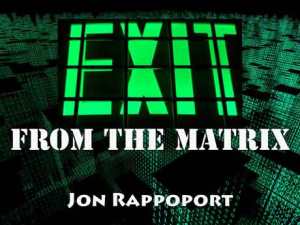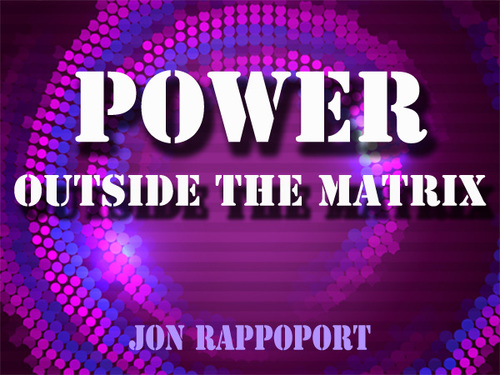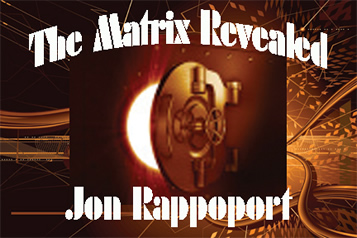Netflix House of Cards: politics without redemption
Hail to the destroyers
Dark night of the soul
Politics=the pretense of Rescue From Above
by Jon Rappoport
March 14, 2016
(To read about Jon’s mega-collection, Exit From The Matrix, click here.)
“The gift of a good liar is making people believe you lack a talent for lying.” President Frank Underwood, House of Cards
This is a series worth watching. Season 4 has just been released.
The language of politics is the language of lying, and it’s hard to recall any other piece of modern fiction about politics that reveals this fact so forcefully and nakedly.
President Frank Underwood; his wife Claire; Will Conway, his opponent in the upcoming election; numerous other characters moving in and out of that orbit—they lie, and they lie all the time, and they especially lie when they profess humanitarian motives, when they express sympathy and caring, when they proclaim hope for a better future. The Good, in fact, is their front-and-center cover story. Whenever The Good is the subject (and when isn’t it?), they pretend to care, but they only and always pretend—because accumulating power is their only desire—and you see the double-faced charade on the screen again and again, until you accept the lying language as business as usual. As the way things are done.
The House of Cards writers are relentless about exposing how political language is used. They don’t back off. They don’t leave any loopholes.
President Frank Underwood is the chief faker.
At the end of season 4, he and his wife, Claire, have made up their minds that their potential exposure (past crimes) is too great to finesse: they must go on an all-out attack. As a grand diversion.
They will “make terror.” They will evoke terrorist high-panic in the American public, and then wage war against the terrorists. They’ll play both sides against the middle.
At last, they know what they must do, and they’re at peace with it. It’s the final answer. Up until now, they’ve only gone part of the way. That didn’t give them protection. So they’ll finish the job.
Their logic is predictable, given what politics is really all about. The only issue is: how far will they go? They have come to the conclusion: there is no limit.
The public, of course, cannot accept such an idea. The public is always fooled on that score. The public always wants to believe The Good is emanating from their own leaders. That is the public’s version of logic, and it too is predictable within a naive bubble of ultimate faith and hope.
House of Cards doesn’t bother exposing how the press aids and abets this faith. It focuses on the main players within the political establishment. In doing so, it teaches a lesson: those players can enlist sympathy, even as they commit one crime after another. Those key players have charm. They have intelligence. They have magnetic force. They are projections of “how to play the game.” They are determined not to lose. They refuse to accept the nets closing in around them. They don’t back down. They never give in to the urge to surrender. They never believe their own lies—they are, thus, much smarter than the public.
At the same time, the viewer sees how transparent these players are. They fall far short of being geniuses. In a half-sane world, they would have been banished to a desert island long ago. But this is not a half-sane world. The People want Hope. They’ll do anything to believe it’s available, from an external source.
Well, this is the external source: Frank and Claire Underwood. A rolled-up duo of implacable hatred. As Claire finally says: “I’m done appealing to the hearts of people; that doesn’t work; now I have to bring out the fear; build it; stoke it.” She isn’t whistling Dixie. In her position as the First Lady and Frank’s vice-presidential running mate, she can do something about it, and she intends to. The two of them will do it together.
House of Cards has nothing to do with gender politics in the usual sense. Claire’s star is rising. She is taking over the reins from her husband. Her coldness has come to equal, and even surpass, his. He, in decline, needs her to stay alive, to function. She is equal to the task.
The silent invisible character in House of Cards is the public, the population, with its unquenchable desire to believe, to hope, to wish—and to fall for the con.
In recent years, we’ve seen several Presidential candidates who haven’t followed the usual script. They haven’t played up the “rescue from above” tune. Ron Paul, Rand Paul, and Trump. Regardless of what you think of them, they’ve broken the mold.
They’ve begun to make the House of Cards paradigm of politics a bit shaky.
But back to RESCUE FROM ABOVE…
Chicago: are jobs and money better than poverty and protests?
As protestors shut down the Trump rally in Chicago, the divide and conquer op in America reaches a new level.
And where in all this is Obama’s promise of Hope and Change? Nowhere.
Jobs have been fleeing America for a long time now. It’s the Globalist “free trade” plan, and it’s made more poverty and more discontent, right on schedule.
It’s come to the point where many people don’t even want a fix, don’t even want a reversal. They only want to protest. They only want a change from despair to anger.
They want to be a permanent underclass dependent on the government (rescue from above), and at best they seek a new President who will make that dependence more comfortable—as if that were possible.
They no longer see jobs tied to money as a solution. It’s not acceptable to them.
If that is an organizing principle, if that brings people together, then you have…what? You have violence. You have destruction. You have a growing revolution with no aim to change things for the better. In that atmosphere, the only government capable of surviving is a government which promises more Something for Nothing.
And Something for Nothing always has conditions. They add up to greater top-down control, “on behalf of the people.”
“We will give you more. In return, do what we tell you to do. We care. We know what’s best. We work for you. We feel your pain.”
That’s the current sales pitch, of course, but it will rise to new heights.
The one candidate who exemplifies it is Bernie Sanders, who, in his lifetime in Congress, has accomplished virtually nothing.
The subliminal message coming out of Bernie is: “All business is bad. All capitalism is bad. All free enterprise is bad and unfair. Adults are unfair to children. The problem can be solved by government.” Rescue from above.
How that works is a mystery, because it doesn’t work. It never has.
The stark reality is: government doesn’t create jobs over the long-term. Unless you want the USSR. Then everyone has a job. A bad one. Bad job, bad pay, mediocre mindset. No one may rise higher than his neighbor. To do so would be offensive.
In a country like America, you could sell that program as a worker’s utopia for about six months. Until the naïve realized it was very much like living in a slave camp with a cell phone and Facebook.
If I were Bernie Sanders, this is what I would say: “Here is my plan. Here is my rescue from above. Every person in American over the age of 17 who doesn’t make $35,000 a year will get a government check to make sure they do make $35,000 a year. Anyone who makes more than $50,000 a year is a thief and a crook and a capitalist. So whatever they make in excess of 50K will be taken away from them. In addition, every child in America can attend college, regardless of grades or background, for six years. No charge. Every child will get a college diploma, even if they don’t attend classes. For every protest you attend while at college, you’ll receive half an ounce of prime weed. If you hold a Kill Capitalism or I Don’t Need no Stinkin’ Job sign at eight rallies, you’ll receive a virtual reality headset.”
On the basis of that statement, I would expect Bernie rallies to draw upwards of 100,000 people.
Forget socialism. We’re past that. Nobody works. Bring on full-bore automation in every company in America.
Schools have one and only one goal: remove personal ambition from every mind.
“Yeah, I remember it like yesterday, even though it was so long ago, my child. That night in Chicago was the beginning of the real revolution. We started to realize what we really wanted. Nothing. Everything. Know what I mean? We were crazy then. We had to be. That night is why you have this great 150-foot square apartment in an affluent section of town, and the virtual reality and the free drugs and the sleep machine and the protest schools and the no-classes and no teachers…”
“That night is why you have the 250 vaccines in you and the hospital complex that takes up half the Southwest, where you go every year to get your updated psychiatric diagnosis and the gold badge you proudly wear that tells everybody what condition you have, so you all have something to talk about…”
All is well.
Rescue from above is the grand pretense and the grand op.
It can be packaged and sold in so many ways.
After 30 years of working as a reporter and digging into scandals which were falsely sold on the “rescue” basis, I gave a talk at a conference in California, and I presented my alternative. I said:
“I’m selling you to you.”
That’s my pitch.
I’m selling what you are, underneath it all, and what you can be, and these are things only you know. I can point to them.
But I can’t and won’t try to pile up what you should think and what you should decide and what you should do.
You have two great capacities: the ability to reason and analyze; and the infinite ability to imagine.
Imagination takes you into your own future and opens it up without limit. Then you can decide how you want to invent it.
Imagination is everything that doesn’t already exist.
Imagination demolishes all versions of waiting around for rescue from above. Imagination is the fire. The great adventure.
Imagination is you inventing what was previously unknown.
Imagination is independence.
Every person has imagination and, therefore, the potential for independence.
If “politics” has anywhere to go, that’s where.
That’s where the lying and the manipulation and the crimes can stop.
With the individual.
When the illusion of rescue is replaced by imagination and creative fire, then all things are possible…
Jon Rappoport
The author of three explosive collections, THE MATRIX REVEALED, EXIT FROM THE MATRIX, and POWER OUTSIDE THE MATRIX, Jon was a candidate for a US Congressional seat in the 29th District of California. He maintains a consulting practice for private clients, the purpose of which is the expansion of personal creative power. Nominated for a Pulitzer Prize, he has worked as an investigative reporter for 30 years, writing articles on politics, medicine, and health for CBS Healthwatch, LA Weekly, Spin Magazine, Stern, and other newspapers and magazines in the US and Europe. Jon has delivered lectures and seminars on global politics, health, logic, and creative power to audiences around the world. You can sign up for his free NoMoreFakeNews emails here or his free OutsideTheRealityMachine emails here.



